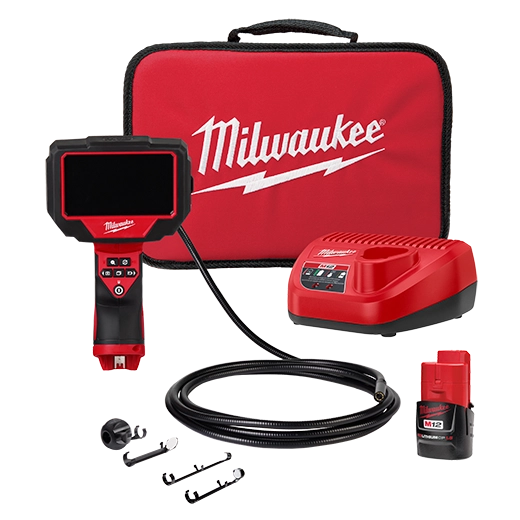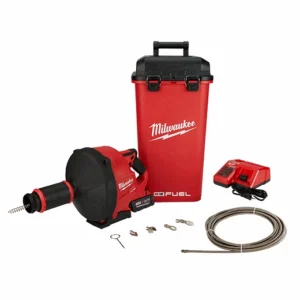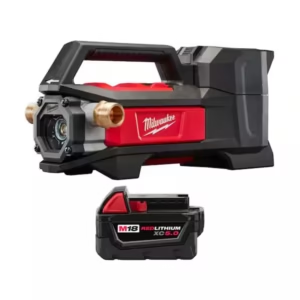M12 Pipeline Inspection Camera
having the right tools to efficiently inspect pipelines is crucial. Among the various inspection devices available, the M12 Pipeline Inspection Camera stands out as a revolutionary tool designed to make pipeline inspection faster, easier, and more reliable.
M12 Pipeline Inspection Camera: The Ultimate Guide for Professionals and DIY Enthusiasts
In today’s fast-paced construction, plumbing, and maintenance industries, having the right tools to efficiently inspect pipelines is crucial. Among the various inspection devices available, the M12 Pipeline Inspection Camera stands out as a revolutionary tool designed to make pipeline inspection faster, easier, and more reliable. Whether you are a professional plumber, a contractor, or a DIY enthusiast, understanding the features, benefits, and applications of the M12 pipeline inspection camera can help you enhance your work quality and save time.
In this comprehensive guide, we will cover everything you need to know about the M12 pipeline inspection camera, including its technology, how it works, key features, advantages, and tips for selecting the right model for your needs.
What is an M12 Pipeline Inspection Camera?
The M12 Pipeline Inspection Camera is a compact, handheld device used to visually inspect the inside of pipelines, drains, sewers, and other confined spaces. It consists of a flexible cable with a high-resolution camera mounted on the end, allowing users to navigate through pipes and see real-time video footage of the interior conditions on a connected display or smartphone app.
The “M12” in the name typically refers to the diameter of the camera head, which is approximately 12mm, making it suitable for inspection in relatively narrow pipelines without causing blockages.
Why Use an M12 Pipeline Inspection Camera?
Pipeline inspection cameras have revolutionized the way professionals diagnose problems inside pipes without destructive digging or dismantling. Here’s why the M12 variant is gaining popularity:
-
Non-invasive inspection: Quickly identify clogs, leaks, cracks, corrosion, or other damage inside pipes without excavation.
-
Time-saving: Immediate access to visual data speeds up diagnosis and repair.
-
Cost-effective: Reduces labor and material costs by avoiding unnecessary pipe replacement or digging.
-
Accurate diagnostics: High-resolution images allow precise identification of issues.
-
User-friendly: Designed for easy handling, even in tight spaces or long pipe runs.
Key Features of the M12 Pipeline Inspection Camera
When choosing an M12 pipeline inspection camera, it’s important to understand the features that define its quality and usability:
1. Camera Diameter (12mm Head)
The 12mm diameter allows the camera to fit into smaller pipes and conduits, generally ranging from 1.5 inches to 6 inches in diameter. This size strikes a balance between being small enough to navigate tight spaces and large enough to house quality camera optics and lighting.
2. High-Resolution Camera
Modern M12 inspection cameras come with HD or Full HD cameras (720p or 1080p), ensuring crisp and clear visuals of pipe interiors. Some advanced models even offer 4K resolution.
3. LED Lighting
The camera head is equipped with adjustable LED lights that illuminate dark pipe interiors, ensuring clear visibility even in total darkness.
4. Flexible Push Rod Cable
The flexible yet sturdy cable enables users to push the camera deep into pipes while navigating bends and curves easily. Lengths vary from 30 meters up to 100 meters, depending on model.
5. Wireless Connectivity and Display Options
Many M12 cameras connect wirelessly to smartphones, tablets, or dedicated monitors, enabling real-time viewing, video recording, and image capture.
6. Waterproof and Durable Construction
Since the camera operates inside pipes, waterproof and rugged construction is essential to withstand wet and harsh environments.
7. Battery Life and Power Options
Portable models feature rechargeable batteries with 2 to 6 hours of operation, perfect for field use.
8. Software and Reporting Features
Some units offer software that supports video analysis, annotation, and reporting, useful for professional documentation.
How Does the M12 Pipeline Inspection Camera Work?
Using an M12 pipeline inspection camera involves a straightforward process:
-
Preparation: Connect the camera unit to the display device (monitor, tablet, or smartphone). Ensure the battery is charged or connect to power if applicable.
-
Insertion: Insert the camera head into the pipeline opening.
-
Navigation: Gently push the flexible cable into the pipe. The camera will transmit real-time video footage.
-
Inspection: Watch the live feed on the connected display, identifying any blockages, cracks, or other issues.
-
Recording: Capture video or snapshots if needed for further analysis or client reporting.
-
Withdrawal: Carefully retract the cable and clean the camera for storage.
Applications of the M12 Pipeline Inspection Camera
The versatility of the M12 pipeline inspection camera makes it suitable for a wide range of industries and uses:
1. Plumbing
Plumbers use these cameras to inspect clogged drains, sewer lines, and water pipes to pinpoint blockages or damage without digging up floors or walls.
2. Construction and Building Maintenance
Construction teams inspect underground piping systems during new builds or renovations to verify pipe integrity before closing walls or floors.
3. Municipal and Utility Services
City maintenance crews rely on inspection cameras to monitor sewer systems, storm drains, and water mains to prevent failures and ensure compliance.
4. Industrial Inspection
Factories and plants use pipeline inspection cameras to check process piping and chemical conduits for wear and corrosion.
5. Homeowners and DIY Enthusiasts
Homeowners use these cameras to check for plumbing issues in their homes, potentially saving on costly professional inspections.
Benefits of Using an M12 Pipeline Inspection Camera
Choosing an M12 pipeline inspection camera offers numerous benefits:
-
Enhanced Diagnostic Accuracy: The live visuals enable exact localization of pipe defects.
-
Improved Repair Planning: Knowing the problem’s exact location and nature helps plan precise repairs.
-
Reduced Downtime: Quick inspections mean faster repairs and less operational disruption.
-
Increased Safety: Minimizes the need for manual pipe entry or excavation.
-
Cost Savings: Avoids unnecessary digging and guesswork, reducing labor and materials.
How to Choose the Right M12 Pipeline Inspection Camera
Selecting the perfect M12 pipeline inspection camera depends on your specific needs and budget. Here are factors to consider:
1. Pipe Diameter Compatibility
Ensure the 12mm camera head can fit the pipe sizes you work with regularly.
2. Cable Length
Longer cables allow inspection of deep or lengthy pipes but may reduce portability.
3. Image Quality
Choose a camera with at least HD resolution and adjustable lighting for clear visuals.
4. Display Type
Decide if you prefer a dedicated monitor or a wireless connection to your smartphone or tablet.
5. Durability and Waterproof Rating
Look for IP67 or higher waterproof ratings and rugged construction.
6. Battery Life
For fieldwork, longer battery life is critical to avoid interruptions.
7. Software Features
If you require professional reports, select models with integrated video analysis software.
8. Budget
Prices range from budget-friendly basic models to high-end professional units.
Top M12 Pipeline Inspection Cameras in the Market (2025 Update)
Here are some recommended M12 pipeline inspection cameras that combine performance and value:
1. RIDGID SeeSnake Mini (M12 variant)
-
12mm camera head, 30m cable
-
HD video and LED lighting
-
Wireless connection to smartphone
-
Rugged, waterproof design
2. Teslong Industrial Endoscope
-
12mm camera with 2 million pixels
-
Adjustable LED lights
-
Compatible with Android and iOS devices
-
5-meter flexible cable
3. Depstech Wireless Endoscope
-
12mm HD camera head
-
WiFi connection to smartphones
-
Rechargeable battery with 3-4 hours runtime
-
10m semi-rigid cable
4. Oiiwak Pipeline Inspection Camera
-
12mm camera head with 1080p video
-
15m cable length
-
LED illumination with brightness control
-
Real-time video on dedicated LCD screen
Tips for Effective Pipeline Inspection with the M12 Camera
-
Clean the camera lens before use to avoid blurry images.
-
Slowly insert the camera to avoid cable kinks or damage.
-
Use adjustable LED lighting to optimize visibility depending on pipe conditions.
-
Record video during inspection for later review or client documentation.
-
Maintain the camera and cable by cleaning and storing properly.
-
Practice navigating bends in pipes to get accurate visual feedback.
-
Use compatible software if available for detailed reporting.
Maintenance and Care for Your M12 Pipeline Inspection Camera
Proper maintenance ensures your camera lasts longer and delivers accurate results:
-
After each use, wipe the camera lens and cable clean with a soft cloth.
-
Avoid sharp bends or kinks in the cable.
-
Store the cable coiled loosely to prevent damage.
-
Charge batteries fully before storage.
-
Inspect the camera housing and cable for cracks or damage regularly.
-
Update software or apps for wireless models when updates are available.





There are no reviews yet.